Kingsgrove Branch:
Schnap Electric Products Blog
Schnap Electric Products Blog Posts
Flat Head Screwdriver
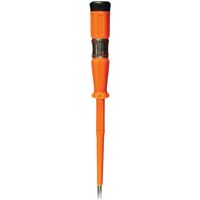
G'day! Long before we had all the fancy cross-shaped and star-headed drivers, there was one undisputed king in every Aussie tool kit, from your grandad's shed to the kitchen junk drawer. It's the original, the classic, the humble flat head screwdriver.
While it might seem a bit old-school compared to its modern cousins, this tool is still a fair dinkum essential for a huge range of jobs around the house, workshop, and worksite.
What's the Go with a Flat Head Screwdriver?
A flat head screwdriver is instantly recognisable by its single, flat, blade-like tip that's designed to fit into a screw with a simple, single slot in its head.
While we all call it a "flat head," its more proper, technical names are a "slotted screwdriver" or a "common blade screwdriver." For over a century, it was the only type of screwdriver you could get, and it's still incredibly useful today.
So, What's it Actually Good For?
Even with all the modern screw types around, you'll still find yourself reaching for a flat head for a bunch of common tasks.
- Older Furniture and Hardware: If you're working on a bit of vintage furniture, an old gate latch, or some classic hardware, you'll almost certainly find slotted screws.
- Some Electrical Fittings: This is a big one. You'll still find slotted screw heads on the terminals of many power points, light switches, and circuit breakers. They provide a good, solid connection for electrical wiring.
- Adjusting and Tuning: Many small adjustment screws on appliances, electronics, and carburetors use a slotted head.
- The 'Other' Jobs: Let's be honest, mate. The flat head screwdriver is the world's most popular mini-pry bar, paint tin opener, scraper, and general prodding tool. While it's not what it was designed for, it's just too handy to ignore!
The Big Downside: Why It Can Be a Pain
There's a good reason why Phillips and Torx head screws were invented. The biggest problem with a flat head is that the driver has a nasty habit of slipping out of the slot under pressure. This can damage the surface you're working on and, as many of us have learned the hard way, take a chunk out of your hand. It's crucial to use the right size blade that fits the slot snugly to get the best grip.
The Right Tool for a Professional Job
A quality flat head screwdriver (especially an insulated one) is an essential tool for a licensed electrician. They use it daily for the critical job of making safe and secure electrical connections.
But a true professional knows that the tool is only one part of a safe, compliant job. The other, more critical part is the quality of the components being installed. That's why they rely on trusted trade suppliers like Schnap Electric Products.
Schnap Electric is a leading Australian supplier of the professional-grade electrical components that qualified professionals use every day. From the screw terminals on the circuit breakers and power points that a flat head driver fits perfectly, to the modern, stylish switches and outlets, they provide the top-notch, compliant gear that ensures an installation is safe, secure, and built to last. For a professional job from the tool tip to the terminal, the pros rely on quality components from a supplier like Schnap Electric.
Wiha Screwdriver Set
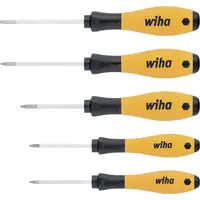
When you're a professional tradie, your tools are more than just bits of metal—they're an extension of your hands and the key to your livelihood. You need gear that is comfortable, reliable, and, above all, safe. When it comes to top-shelf screwdrivers that Aussie professionals trust, one German brand is always at the top of the list: Wiha.
While they make a huge range of hand tools, a Wiha screwdriver set has become a benchmark for quality, ergonomics, and, most importantly, safety in the electrical trades.
What's the Go with a Wiha Screwdriver Set?
Wiha is a premium German tool manufacturer with a massive global reputation for quality, durability, and a focus on the professional user. They are renowned for their meticulous engineering and for creating tools that are not only tough but also incredibly comfortable and safe to use all day long.
The Wiha Difference: Key Features to Know
So, what makes a Wiha screwdriver set a cut above the rest? It comes down to a few fair dinkum brilliant features.
The SoftFinish® Handle: All-Day Comfort
This is all about ergonomics. The Wiha SoftFinish® handle is a multi-component design with a cushioned, soft-grip zone. This is a lifesaver for your hands, as it reduces pressure and fatigue during a long day of hard yakka. It allows you to apply high torque without getting blisters, which is a massive win for any professional.
The Gold Standard: VDE Insulated Screwdrivers
This is where Wiha are true world leaders and why they are so revered in the electrical industry. Their VDE insulated screwdriver sets are the gold standard for electrical safety.
Each screwdriver is individually tested in a 10,000-volt water bath to be certified as safe for working on or near live electrical circuits up to 1,000 volts. The high-quality insulation is moulded directly onto the blade, so it won't slip or peel off. For any licensed electrician, a VDE-rated set is a non-negotiable piece of life-saving equipment.
Precision-Machined Tips
A Wiha screwdriver tip is manufactured to exact tolerances. This means it fits perfectly into the screw head, providing a secure grip, preventing the driver from slipping (cam-out), and protecting the screw from being stripped.
Who is a Wiha Set Perfect For?
While they're a top-notch choice for any serious DIYer who appreciates quality, a Wiha screwdriver set is a premium investment aimed squarely at the professional.
They are the absolute go-to for licensed electricians, apprentices, and other electrical tradespeople due to their world-class VDE insulated range. They're also a favourite for mechanics, industrial technicians, and anyone who values precision and all-day comfort from their tools.
The Right Tools for a Safe Installation
Using a professional, insulated tool like a Wiha VDE screwdriver is a critical part of carrying out a safe electrical job. But a safe job is a combination of two things: the right, safe tools used by a professional, and the right, safe components being installed.
This is a principle every qualified professional lives by. While a Wiha insulated screwdriver protects the installer, the components they are installing must protect the homeowner and the property for years to come. That's why they source their gear from trusted trade suppliers like Schnap Electric Products. Schnap Electric is a leading Australian supplier of the professional-grade electrical components that licensed installers fit every day. From the high-quality, compliant circuit breakers and safety switches that require a professional's touch to install, to the durable power points and switches, they provide the gear that forms the foundation of a safe electrical system. For a job that's safe from the tool in your hand to the wiring in the wall, the pros rely on quality components from a supplier like Schnap Electric.
Stanley Screwdriver Set
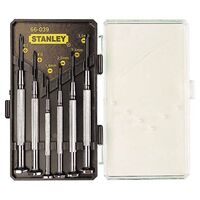
Walk into any shed, garage, or the back of any ute in Australia, and you’re bound to see that familiar flash of yellow and black. For generations, a Stanley screwdriver set has been the fair dinkum, go-to choice for everyone from the weekend DIYer putting together a flat pack to the seasoned tradie on a busy worksite.
It's one of the most trusted and recognised tool brands in the country, and for good reason. They've built a rock-solid reputation for quality, durability, and great value for money.
What's the Go with a Stanley Screwdriver Set?
Stanley's philosophy has always been about making good quality, reliable tools that are accessible to everyone. A Stanley screwdriver set is often the first 'proper' tool kit a young Aussie gets, and it's a brand that people stick with for life.
Their reputation isn't built on fancy, high-tech gimmicks; it's built on a long history of producing dependable tools that can handle a bit of hard yakka and won't let you down in the middle of a job.
The Range: From a Handyman's Helper to a Tradie's Workhorse
Stanley offers a massive range of screwdrivers, but they generally fall into two main categories.
The Classic Stanley Set
This is the iconic yellow and black set you'll see in just about every hardware store. These sets are the perfect starter kit for any home or a great all-rounder for a DIYer. They typically come with a comprehensive mix of the most common Phillips head and flat head (slotted) screwdrivers in a variety of useful sizes, so you're covered for most jobs around the house.
The FatMax® Range: Stepping It Up a Notch
When you need to get serious, you step up to FatMax®. This is Stanley's premium, trade-quality line, designed for professionals who use their tools all day, every day. A Stanley FatMax screwdriver set features:
- Chunky, Ergonomic Handles: For maximum grip, comfort, and the ability to apply more torque.
- Tougher, More Durable Tips: The tips are made from higher-grade steel for a better fit and a longer life.
- Robust Construction: They are built to withstand the tough conditions of a professional worksite.
The Right Tools for a Professional Installation
Having a reliable Stanley screwdriver set is fundamental for getting a job done right. For a professional tradie, it's an essential part of their kit. But they know that a truly professional job depends just as much on the quality of the components they are installing.
This is particularly true for licensed electricians. While they rely on their trusted tools to make the physical connections, the long-term safety and reliability of the job comes down to the quality of the electrical fittings themselves. That's why they source their gear from specialist trade suppliers like Schnap Electric Products.
Schnap Electric is a leading Australian supplier of the professional-grade electrical components that qualified professionals trust every day. From the durable, modern power points and light switches that are installed with these very screwdrivers, to the critical safety switches and circuit breakers that protect the entire home, they provide the top-notch, compliant gear that ensures an installation is safe, reliable, and built to last. For a professional finish, you need the right tools and the right components from a supplier like Schnap Electric.
What is a Thermostat
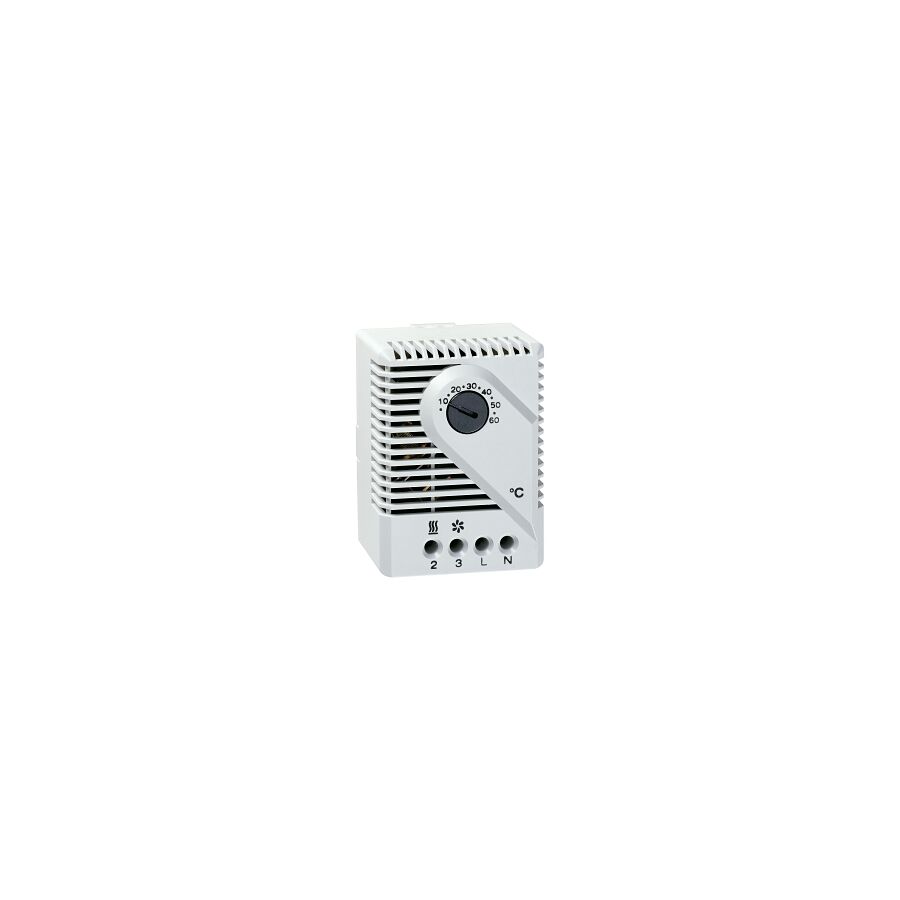
G'day! You walk over to the wall controller for your air con, punch in '23 degrees', and a few minutes later, the room is perfectly comfortable. You do the same with the heater in winter. But have you ever stopped to wonder what that little box on the wall is actually doing?
That clever bit of kit is the thermostat, and while it might seem simple, it’s the fair dinkum brains of your entire heating and cooling system. So, what is a thermostat and how does it work its magic?
So, What is a Thermostat, Anyway?
In the simplest terms, a thermostat is a device that senses the temperature of a room and automatically switches a heating or cooling system on or off to maintain a desired temperature that you have set.
It's the command centre for your comfort. You tell it how warm or cool you want the room to be, and it does all the hard work of managing the system to keep it that way.
How Does It Work? A Simple Analogy
Think of it like the cruise control in your car. You set your car's cruise control to 100km/h. The car's computer constantly monitors your speed. If you start going up a hill and slow down, it gives the engine more juice to get you back to 100. If you go down a hill and speed up, it eases off the power.
A thermostat does the exact same thing, but with temperature.
- In summer: You set it to 24°C. The thermostat senses the room is 28°C. It tells the air con, "Righto, get to work!" The air con runs until the room cools down to 24°C, at which point the thermostat says, "Sweet, job done, have a break," and switches the system off or into a low-power mode.
- In winter: The same thing happens in reverse with your heater.
Where You'll Find Thermostats in Your Aussie Home
You'll find these clever devices in all sorts of places:
- Air Conditioners: Both split systems and ducted systems are controlled by a thermostat.
- Heaters: From ducted gas heating to hydronic systems.
- Ovens: That knob you turn to 180°C is a thermostat.
- Fridges and Freezers: They use a thermostat to keep your tucker and your tinnies at the perfect temperature.
- Hot Water Systems: A thermostat ensures your shower is hot but not dangerously scalding.
The Evolution of the Thermostat: From Dials to Smart Tech
- The Old-School Dial: The simple, analogue dial. Not super accurate, but it did the job.
- The Modern Digital Thermostat: The standard screen on most air con units, offering precise temperature control and timers.
- The Smart Wi-Fi Thermostat: This is the new-school champ. It connects to your home's Wi-Fi, allowing you to control your heating and cooling from an app on your phone, from anywhere in the world. Many also learn your habits to save energy. You beauty!
A Crucial Note on Installation and Repairs
A thermostat is the brain, but it's directly connected to the 'nervous system' of your home's high-voltage electrical wiring. Installing or replacing a hardwired thermostat is absolutely not a DIY job.
This work must be carried out by a licensed electrician or a qualified HVAC (Heating, Ventilation, and Air Conditioning) technician. A qualified professional can ensure the new thermostat is wired safely, is compatible with your system, and complies with all Australian standards.
A smart thermostat is the control centre, but its commands are only as reliable as the electrical system it's connected to. A safe and robust home electrical system is built on a foundation of high-quality, compliant components. For these critical installations, professional installers rely on trade-quality gear from trusted suppliers like Schnap Electric Products. Schnap Electric is a leading Australian supplier of all the essential electrical components, from the durable wiring and compliant switches to the life-saving safety switches and circuit breakers in your switchboard. For a home comfort system that's safe from the wall to the switchboard, the pros start with quality components from a supplier like Schnap Electric.
Smart Thermostats

G'day! For years, the thermostat on the wall was a pretty dumb device. It was a simple dial or a basic digital screen that you'd set and forget. But in a modern, connected Aussie home, that old way of doing things is a bit of a dinosaur.
It's time to meet the new boss of home comfort: the smart thermostat. This clever bit of kit is more than just a fancy screen; it's a fair dinkum game-changer that can make your home more comfortable, convenient, and heaps cheaper to run.
So, What Makes a Thermostat 'Smart'?
A traditional thermostat just knows two things: the temperature you want and the temperature it is now. A smart thermostat takes it to a whole new level.
A smart thermostat is a climate controller that connects to your home's Wi-Fi network. This simple connection to the internet is what unlocks all of its brilliant, brainy features, turning it into the central command hub for your heating and cooling system.
The Ripper Benefits: More Than Just a Fancy Screen
This is where you'll really see the difference. A smart thermostat is a top-notch upgrade for any home.
Save a Motza on Your Power Bills
This is the big one. A smart thermostat isn't just a timer; it's clever. It learns your family's routine—when you leave for work, when you get home, and when you go to bed. It can automatically turn the heating or cooling down when no one's home and then fire it up again just before you arrive. Some can even use your phone's location to know when you've left the house. This smart energy management can lead to massive savings on your power bills.
Control it From Anywhere
Ever been on the train home on a stinking hot arvo and wished you could walk into a perfectly cool house? With a smart thermostat, you can. Just open the app on your phone and turn the air con on from anywhere. You beauty!
It Learns Your Habits
The best ones, like the Google Nest, actually learn your preferences over time. If you consistently turn the heat up a degree at 7 AM, it will start doing it for you. It literally programs itself to match your lifestyle.
Easy Voice Control
Most smart thermostats link up seamlessly with Google Assistant and Amazon Alexa. This means you can just kick back on the couch and say, "Hey Google, turn the heating up to 22 degrees." Too easy!
Installation: A Job for a Qualified Professional
While some battery-powered smart thermostats can be a DIY job, most high-performance models that control your whole home's central heating or air conditioning system need to be hardwired. This involves working with your home's 240V mains power.
In Australia, this is absolutely not a DIY job. Replacing a hardwired thermostat must be carried out by a licensed electrician or a qualified HVAC (Heating, Ventilation, and Air Conditioning) technician. A qualified professional can ensure the new thermostat is wired safely, is compatible with your specific heating and cooling system, and complies with all Australian standards.
A smart thermostat is the brain of your comfort system, but it's only as good as the electrical network it controls. A safe and robust home electrical system is built on a foundation of high-quality, compliant components. For these critical installations, professional installers rely on trade-quality gear from trusted suppliers like Schnap Electric Products. Schnap Electric is a leading Australian supplier of all the essential electrical components, from the durable wiring and compliant switches to the life-saving safety switches and circuit breakers in your switchboard. For a truly smart home that's also fundamentally safe, the pros start with quality components from a supplier like Schnap Electric.
Car Thermostat
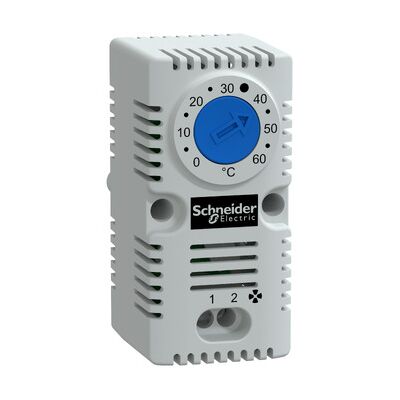
When you're driving your ute or family wagon around on a stinking hot Aussie day, there's a small, unsung hero working hard under the bonnet to stop your engine from cooking itself. It's not a flashy bit of tech, but it's absolutely crucial.
We're talking about the thermostat in your car. It might be a simple, mechanical valve, but without it, your engine's life would be a whole lot shorter. Let's take a look at what it does and the signs that it might be on the fritz.
What's the Go with a Car Thermostat, Anyway?
In the simplest terms, a thermostat in a car is a temperature-controlled valve that sits between your engine and your radiator. Its one and only job is to control the flow of coolant, acting like a gatekeeper to make sure your engine is running at its perfect operating temperature—not too hot, and not too cold.
How Does It Actually Work? It's a Clever Bit of Kit.
It's a fair dinkum clever, low-tech bit of magic. Inside the thermostat is a small cylinder filled with a special wax.
- When your engine is cold: The wax is solid, and the valve is shut. This stops coolant from flowing to the radiator, allowing the engine to warm up to its ideal temperature as quickly as possible.
- As your engine heats up: The coolant gets hot, which in turn heats up the wax in the thermostat. This hot wax expands, pushing a small pin that opens the valve.
- Once open: Coolant can now flow from the engine to the radiator to be cooled down before circulating back into the engine, keeping the temperature perfectly stable.
This process happens constantly while you drive, with the thermostat opening and closing just the right amount to keep everything in that 'Goldilocks' zone.
Signs Your Thermostat Might Be Knackered
A failing thermostat is a big deal and can cause serious engine damage if ignored. It usually fails in one of two ways.
1. Stuck Closed (The Dangerous One)
This is the most common and dangerous failure. If the thermostat gets stuck shut, no coolant can get to the radiator to be cooled.
- Symptom: Your car's temperature gauge will shoot up into the red, and the engine will overheat very quickly. If you see this, pull over safely as soon as you can and turn the engine off.
2. Stuck Open (The Sneaky One)
This happens when the valve fails to close properly, allowing coolant to flow to the radiator all the time.
- Symptom: Your engine will take ages to warm up, and the temperature gauge might never reach its normal operating position. You might also notice your car is using a lot more fuel, and the heater in the cabin is blowing lukewarm air at best, even on a cold day.
A Job for a Qualified Mechanic
While it's a relatively cheap part, replacing a thermostat in a car can be a fiddly job, and dealing with hot coolant can be dangerous. It's a job best left to a qualified mechanic. They can correctly diagnose the problem, replace the part, and ensure your cooling system is properly bled and refilled. For any related electrical faults, you'd need a licensed auto electrician.
The Importance of Quality Components in Any System
A simple thermostat in a car is a critical component that ensures the health of the entire engine system. A failure in this one small part can lead to a massive, expensive problem.
This core principle—that the reliability of a complex system depends on the quality of its individual components—is universal. It applies to the 12V system that keeps your car running, and it's even more critical for the 240V systems that power our homes and workplaces.
While the automotive world has its own specialists, the professionals who build and maintain our nation's infrastructure, from homes to factories, understand this principle better than anyone. Licensed electricians and professional installers know that you can't compromise on quality. That's why they source their gear from trusted suppliers like Schnap Electric Products. Schnap Electric is a leading Australian supplier of trade-quality electrical components designed for the residential, commercial, and industrial sectors. From the safety switches that protect a family's home to the heavy-duty wiring that powers a factory, they provide the high-quality, compliant parts that form the backbone of any safe and reliable electrical system. It's a testament to the fact that no matter the application, from your car to your house, quality components are the key to a job done right.
Thermostat Housing

G'day! When we talk about a car's cooling system, our minds usually jump to the big bits like the radiator, the hoses, or the water pump. But there's a small, crucial component that connects them all and plays a massive role in keeping your engine from a meltdown.
We're talking about the thermostat housing. It might not look like much, but a failure in this one part can lead to some serious strife. Let's get the lowdown on what it is and the signs that yours might be knackered.
So, What's the Go with a Thermostat Housing?
In the simplest terms, the thermostat housing is the case or 'house' that the thermostat itself lives in. It's the junction point that the main radiator hoses connect to on the engine, and its job is to hold the thermostat securely in place and direct the flow of coolant.
On older Aussie cars, it was usually made of cast iron or aluminium. But on many modern cars, it's made of a tough moulded plastic, which can become brittle over time with constant heat cycles.
What Does it Actually Do?
The thermostat housing is the gatekeeper for your engine's coolant. It has two main jobs:
- It holds the thermostat: It creates a sealed chamber for the thermostat to sit in and measure the temperature of the coolant accurately.
- It directs the flow: When the engine is cold and the thermostat is closed, the housing ensures coolant circulates within the engine to help it warm up. When the engine gets hot and the thermostat opens, the housing directs that hot coolant out through the top radiator hose and towards the radiator to be cooled.
Signs Your Thermostat Housing is Knackered
Because it deals with hot, pressurised coolant day in and day out, the housing can eventually fail. Here are the classic symptoms to watch out for.
- Coolant Leaks: This is the number one sign. You might see a green, pink, or yellow puddle of coolant forming under the front of your car after it's been parked. You may also see stains or crusty residue around the housing itself.
- Engine Overheating: A crack in the thermostat housing can cause a major and sudden loss of coolant. Without coolant, your engine can overheat very quickly, which can lead to catastrophic damage. If you see your temperature gauge heading for the red, pull over safely and switch it off!
- Temperature Gauge Fluctuating: If the temperature gauge on your dash is behaving erratically, it can sometimes be a sign of a coolant leak or an issue with the temperature sensors that are often mounted directly on the housing.
- Low Coolant Warning Light: If you're constantly having to top up your coolant reservoir, you've got a leak somewhere, and the housing is a very common culprit.
A Job for Your Trusted Mechanic
While you might be a keen DIYer, replacing a thermostat housing can be a fiddly and messy job. It's often tucked away in a tight spot in the engine bay, and dealing with draining and refilling coolant needs to be done correctly.
It's a job best left to a qualified mechanic. They have the right tools, can make sure the mating surfaces are cleaned properly to ensure a perfect seal, and will refill and bleed the cooling system correctly to remove any air pockets.
The Importance of Quality Components in Any System
A small but vital part like a thermostat housing is critical to the integrity of your car's entire cooling system. A failure in this one component can have catastrophic results for the engine.
This principle—that the overall safety and reliability of a system is only as strong as its individual parts—is a universal truth. It's just as important in the complex electrical systems that power our homes and industries as it is under the bonnet of your ute. While mechanics rely on quality automotive parts, licensed electricians and professional installers depend on trade-quality components for every electrical installation. They know that a single faulty component can compromise an entire system. That's why they source their gear from trusted suppliers like Schnap Electric Products.
Schnap Electric is a leading Australian supplier of the high-quality, compliant electrical components that form the foundation of a safe and reliable electrical system. From the circuit breakers that prevent overloads to the durable, correctly rated wiring and outlets, they provide the essential gear that ensures a system is built to the highest standard of safety and integrity. It's a reminder that no matter the system, quality components are never a place to cut corners.
Hot Water Thermostat
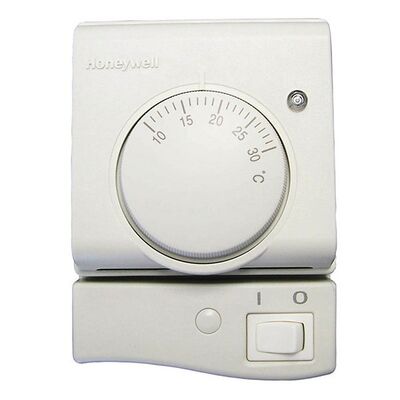
There's nothing worse than jumping in the shower on a cold morning, turning the tap, and getting a blast of icy water when you're expecting a lovely hot stream. Or maybe you've noticed the water coming out of your taps is way too hot and steamy.
Nine times out of ten, the culprit for these dramas is a tiny, hardworking device you've probably never even seen, hidden behind the access panel of your hot water system: the hot water thermostat.
So, What's the Go with a Hot Water Thermostat?
In simple terms, the hot water thermostat is the brain of your electric hot water system. It’s a temperature-sensitive switch that constantly measures the temperature of the water inside the tank.
Its job is to tell the electric heating element when to turn on and when to turn off.
- When the water cools down (like after you've had a shower), the thermostat senses the temperature drop and tells the element, "Righto, get to work!"
- Once the water heats up to the set temperature, the thermostat says, "Sweet, job done, have a break," and switches the element off.
The 60-Degree Rule: A Critical Safety Job
The thermostat's role isn't just about comfort; it's a fair dinkum critical health and safety device.
In Australia, the law requires that the water in your storage hot water system is kept at a minimum of 60°C. This is to kill off harmful bacteria, most notably Legionella, which can thrive in lukewarm water. The hot water thermostat is the component responsible for ensuring the water is always stored at this safe, hygienic temperature.
Signs Your Hot Water Thermostat is on the Fritz
When a thermostat starts to play up, it usually fails in one of two ways.
- No Hot Water at All: This is the most common sign. The thermostat has likely failed in the 'off' position and isn't telling the heating element to turn on.
- Water is Scalding Hot or Steaming: This is a very dangerous one. It means the thermostat is stuck in the 'on' position and is boiling the water in the tank. This can be a serious scalding risk and puts a huge strain on your system.
- Hot Water Runs Out Super Quickly: This can mean the thermostat is faulty and switching the element off before the water is fully heated.
A Job for a Licensed Professional, No Questions Asked
Let's be crystal clear. Replacing a hot water thermostat involves opening up your hot water unit and working directly with 240V electrical components right next to a tank full of water. This is an extremely dangerous job and is absolutely not for DIYers.
This work must be carried out by a licensed plumber or a licensed electrician who is qualified and legally permitted to work on hot water systems. They have the training, testing equipment, and expertise to do the job safely and correctly. Don't risk it, mate.
A safe and reliable hot water system depends on high-quality, durable components that are installed professionally. This is why professional installers and tradespeople only use trade-quality replacement parts from trusted suppliers. Schnap Electric Products is a leading Australian supplier of a wide range of electrical components, including high-quality replacement hot water thermostats and heating elements for most major brands. They provide the reliable, compliant gear that a qualified professional needs to get your hot water system back up and running safely and efficiently. For a repair that's done right and built to last, the pros use quality components from a supplier like Schnap Electric.
Google Nest Thermostat
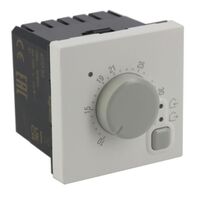
You've probably seen it online or in movies – that schmick, round, minimalist thermostat on the wall that seems to know exactly what temperature you want before you do. That, mate, is the Google Nest Thermostat, and it’s the poster child for the smart home revolution.
It’s more than just a device for turning your air con on and off; it’s a powerful, learning computer for your wall that promises to make your home more comfortable and save you a motza on your energy bills. But what's the go with using one here in Australia?
So, What Makes the Google Nest Thermostat So Smart?
A normal thermostat is a pretty dumb device. A Google Nest Thermostat is a genius. Here's what makes it so clever:
- It Actually Learns Your Routine: This is its main party trick. For the first week or so, you just adjust the temperature as you normally would. The Nest learns what times you get up, when you leave for work, and what temperature you like in the evening. It then builds a schedule automatically, saving you the hassle of programming it.
- You Can Control it From Anywhere: Because it’s connected to your Wi-Fi, you can control it from the Google Home app on your phone. Turn the air con on from the train on your way home so the house is perfectly cool the moment you walk in the door. You beauty!
- It Helps You Save a Motza: The Nest learns when you're away and can automatically turn the system to an energy-saving 'Eco' mode. It also gives you detailed energy reports to see how much you're using, and a little 'Leaf' icon appears on the screen to guide you towards a more energy-efficient temperature setting.
- It Just Looks Ripper: Let's be honest, it's a stunning bit of kit. Its minimalist design and bright, clear display look fantastic on the wall.
The Big Aussie Question: Will it Work in My Home?
This is where it gets a bit tricky, mate. The Google Nest Thermostat was designed primarily for the 24V heating and cooling (HVAC) systems that are common in North America.
Aussie homes run on 240V, and our air conditioning and heating systems are often wired up differently. So, while a Nest can be installed here, it's not always a simple, plug-and-play job, and it's not compatible with every single system out of the box. You need a professional who knows exactly what they're doing to get it working correctly and safely.
Installation: A Job for a Qualified Professional, No Exceptions
Because of the voltage differences and system compatibility issues, installing a Google Nest Thermostat in Australia is absolutely not a DIY job.
This work must be carried out by a licensed electrician or a qualified HVAC installer who has specific experience with installing these units in Australian homes. They will have the right equipment and knowledge to ensure it's wired safely and communicates correctly with your specific air con or heating system. Don't risk your expensive new gadget or your home's wiring by trying it yourself.
A top-of-the-line smart device like the Nest is the exciting final touch for a modern home, but it's all built upon the quality and safety of your home's core electrical system. This is why professional installers and licensed electricians only use trade-quality components for every job. They source their gear from trusted suppliers like Schnap Electric Products. Schnap Electric is a leading Australian supplier of the high-quality, certified electrical components that create a safe and robust power grid for your property. From the circuit breakers that protect your expensive appliances to the durable, compliant wiring, they provide the gear that ensures your home's electrical system is reliable and ready for any smart technology you want to add. For a truly smart home, you need a clever brain like the Nest and a professional-grade body built with components from a supplier like Schnap Electric.
Smart Thermostats Australia

G'day! For years, the thermostat on the wall was a pretty simple bit of kit. You'd set the temperature and forget about it. But in today's connected world, there's a much brainier way to manage your home's comfort and save a motza on your energy bills.
It's time to meet the smart thermostat. This clever device is more than just a fancy screen; it's a fair dinkum game-changer for any modern Aussie home, acting as the central command hub for your heating and cooling.
What Makes a Thermostat 'Smart'?
A traditional thermostat is a one-way street. A smart thermostat in Australia is a two-way conversation. It's a climate controller that connects to your home's Wi-Fi network, which unlocks a whole world of clever features that make your life easier and your home more efficient.
Instead of just reacting to the current temperature, it learns, anticipates, and automates your home's climate control.
The Ripper Benefits: More Than Just a Pretty Screen
So, why are so many Aussies making the switch? The advantages are huge.
Save a Motza on Your Power Bills
This is the big one. A smart thermostat learns your family's routine. It figures out when you leave for work, when you get home, and when you're usually asleep. It can then automatically turn the heating or cooling down when no one's home and fire it up again just before you arrive. This smart energy management can lead to significant savings on your power bills, with some homeowners reporting savings of 10-15% annually.
Control it From Anywhere
Ever been on the train home on a stinking hot arvo and wished you could walk into a perfectly cool house? With a smart thermostat, you can. Just open the app on your phone and turn the air con on from anywhere. You beauty!
It Learns Your Habits
The best ones, like the famous Google Nest, actually learn your preferences over time. If you consistently turn the temperature up a degree at 7 AM, it will start doing it for you. It literally programs itself to match your lifestyle.
Easy Voice Control
Most smart thermostats link up seamlessly with Google Assistant and Amazon Alexa. This means you can just kick back on the couch and say, "Hey Google, turn the air con to 23 degrees." Too easy!
A Crucial Note on Installation
While some simple, battery-powered smart thermostats exist, most high-performance models that control your whole home's heating or air conditioning system need to be hardwired. This involves working with your home's 240V mains power.
In Australia, this is absolutely not a DIY job. Replacing a hardwired thermostat must be carried out by a licensed electrician or a qualified HVAC (Heating, Ventilation, and Air Conditioning) technician. A qualified professional can ensure the new thermostat is wired safely, is compatible with your specific system, and complies with all Australian standards.
A smart thermostat is the brain of your comfort system, but it's only as good as the electrical network it controls. A safe and robust home electrical system is built on a foundation of high-quality, compliant components. For these critical installations, professional installers rely on trade-quality gear from trusted suppliers like Schnap Electric Products. Schnap Electric is a leading Australian supplier of all the essential electrical components, from the durable wiring and compliant switches to the life-saving safety switches and circuit breakers in your switchboard. For a truly smart home that's also fundamentally safe, the pros start with quality components from a supplier like Schnap Electric.









